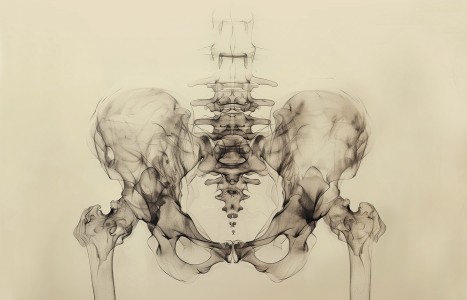People today want convenience, whether it be from their bank, credit card, favorite retail store, or restaurant. They demand it from the companies who hold their loyalty, including their health care providers (you). They don’t want to call and possibly be put on hold, and they want to use an app or schedule an appointment on your website. Here are three reasons your practice can gain by switching to online appointment scheduling.
The Art of Caring for Seniors
- It doesn’t occur to many health practitioners that ageism can be as offensive as racism or sexism. Equally offensive is the practitioner who ignores the client and aims questions at a relative or caregiver.
- “Learn to listen first and foremost,” I tell my groups. Whether your client is fierce or frail, remember that she/he has lived 60-90 years with that body. Honor the quirky ways he/she describes pain and problems!
- I’ve always encouraged my graduates to tap into a client’s history of joyful activities in order to weave that knowledge into exercises or point work clients would enjoy doing at home; especially for seniors.
Of course, people of your age...” – how often have those of us with white hair heard this from a practitioner?
I hold up my hand. “Stop right there,” I say, “It’s helpful to look at health history and exercise routine before making assumptions about age!”
It doesn’t occur to many health practitioners that ageism can be as offensive as racism or sexism.1-2 Equally offensive is the practitioner who ignores the client and aims questions at a relative or caregiver.
As a teacher of ABT, I sense the inadequacy of training in senior health at most undergrad levels when I teach CE classes on the art.
“Learn to listen first and foremost,” I tell my groups. Whether your client is fierce or frail, remember that she/he has lived 60-90 years with that body. Honor the quirky ways he/she describes pain and problems!
I recall one student describe a client as “senile” when the client said she felt “as though her feet were hanging off her back.”
“Ah, visualize it, and the stiffness and pain implied,” I advised. “Work initially in a chair. First of all, stroke down her spine, then palm down either side of the UB meridian. Do some simple stretches to ease the stiffness before you do anything else. Then ask the client, ‘Have your feet returned to the floor?’”
The Value of Humor
Never underestimate the effectiveness of humor in a healing situation. As a student clinic supervisor, I recall watching octogenarian “Rhonda H” walking slowly across the dojo one morning, complaining of feeling “all out of sorts.”
“Let’s set you up in front of that large window,” I suggested, “just like the streetwalkers in Amsterdam!” Rhonda giggled and preened herself. She loved it. The student assigned to her whispered to me that Rhonda was “noncompliant” with the exercises shown to her in previous sessions.
“Then make her comfy facing the window,” I whispered back, “and do some stretches with fun imagery, so Rhonda can enjoy the reactions of folks passing by!”
Cultivating Joy
Generally, I’ve always encouraged my graduates to tap into a client’s history of joyful activities in order to weave that knowledge into exercises or point work clients would enjoy doing at home; especially for seniors.
One of my students asked if tapping into a youthful activity might have the opposite effect of depressing a senior client no longer able to perform those activities. I have never known this to happen, but an intuitive therapist could sense when it’s appropriate or not to tap the client’s past; or to craft new images.
I was inspired watching renowned German physical and shiatsu therapist, and qigong teacher, Inge Berlin, achieve the impossible with “Bruno H,” a senior client. Physicians said Bruno would never walk again following his stroke.
“Nonsense” said Inge. She had Bruno on the mat tumbling around “like a Canadian Bear.” Bruno responded playfully to the image. Inge would get down on the mat with him and extend or pause his tumbling to stretch a limb or access an acupoint. Bruno walked within weeks.
It’s worth repeating a couple of cases I’ve shared before:
Case #1: I was able to get my mother walking again soon after a heart attack and hip replacement at the age of 79 by tapping into her past love of field hockey, golf, and tango. In fact, we used tango steps (two forward, one back) to stabilize and balance her first efforts to walk.
To coordinate her breathing when I did isometric exercises, I’d encourage her to visualize herself running up and down a hockey pitch. If that was too boisterous, I’d share my vivid memory of her on the golf course hitting an ace.
She loved our sessions and the way I would whisk her around the neighborhood later in a wheelchair to enjoy fish n’ chips. Even though she lived in a friendly retirement center, she loved outings and seeing different people, an important factor in a healing situation, especially for seniors who are isolated and immobile.
Bottom line? I encourage all my students to work on parents and grandparents to acquire skills and insights far beyond textbooks.
Case #2: “William J” suffered acute insomnia after his wife passed. He lived in a pre-war New York apartment near NYU, so I made a house call, and couldn’t help noticing all the photos on display of his youthful tennis championships. So, I suggested he walk up and down his long corridors every evening before going to bed, and to mimic hitting tennis serves to an invisible opponent.
“This should tire you eventually,” I smiled, before working his Pericardium meridian. William contacted me within a few weeks to say my suggestion worked like a charm. So simple!
14 General Tips
- The older the client, the more sensitive his/her skin, so be gentle and slow with rotations and acupressure.
- Arthritic hands enjoy very subtle and slow pressure, with an emphasis on P 6 and P 8, held simultaneously, to reduce anxiety.
- If constipation is a problem, show clients how to access LI 4 in a press-and-release rhythm; first one hand, then the other.
- If you are working on clients in a wheelchair, make sure the brake is stabilized so you don’t set the chair spinning across the room.
- By the same token, organize the logistics of a session to avoid getting entangled in drips or portable oxygen systems. Consult an RN or caregiver if necessary.
- When in doubt, you can achieve a lot just by working on hands and feet.
- If you are treating someone in a hospital bed, make sure the remote is visible so you don’t lean on it by mistake and suddenly elevate the head or foot zones!
- It’s OK. We have all made these mistakes!
- For grief, place a flat hand against UB 13-15 back shu points. Then work the Lung meridian with a focus on LU 1 and 2 and CV 17. It’s also helpful to spend perhaps 15 minutes or so of the session walking-and-talking with the client, when possible.
- Advise female (and male) clients to perform Kegel exercises daily to strengthen pelvic floor muscles to help urinary challenges, especially incontinence.
- LAc / herbalist Dr. Christopher Hobbs has written extensively on prostate health.2 To reduce inflammation, Dr. Hobbs swears by 360 mg of saw palmetto two times daily with meals (beans, fresh fruit, veggies, flaxseed and salmon instead of red meat) for guys experiencing difficulties urinating in spite of a constant urge.
- For BPH, I have found working on the client’s UB meridian in the baby pose is helpful, with emphasis on Bl 23 (kidney back shu point) and K 3.3
- For clients experiencing memory challenges, attach Post-It notes in five-element colors on a cork board with a reference guide – perhaps yellow for grocery lists, blue (for plumbing supplies), green (for yard activities), red (to call friends about community meetings), white (for opera, theater outings, etc.) and so on.4
- Encourage a group qigong class. It’s the perfect group exercise for seniors experiencing restricted mobility or balance issues. Many senior or retirement centers offer such classes, along with other group activities like exercises in a swimming pool.
And Finally…
In my past ethics classes, I included tips on recognizing signs of elder abuse, especially if practitioners notice a client shrinking when a family member insists on being in the room during sessions. Use HIPAA to insist on alone time with your client if you can. If the situation is complex, try to grab a few moments alone with your client when the family member uses the restroom or leaves to move a car.
If your hunch about any form of emotional or physical abuse is confirmed, always consult an experienced social worker colleague familiar with local resources before taking action required by law. Never, ever confront the alleged abuser.
References
- Ferguson PE. “Combating All the ‘isms’ in Asian Medicine.” Part 1: Racism. Acupuncture Today, November 2020; Part 2: Ageism, Sexism, Homophobia, December 2020.
- Dr. Christopher Hobbs’ books and articles are available at https://christopherhobbs.com.
- Ferguson PE. “Men’s Health From Male Cycles to Andropause.” Acupuncture Today, July 2004.
- Ferguson PE “Prompting Memory.” Acupuncture Today, July 2018.



